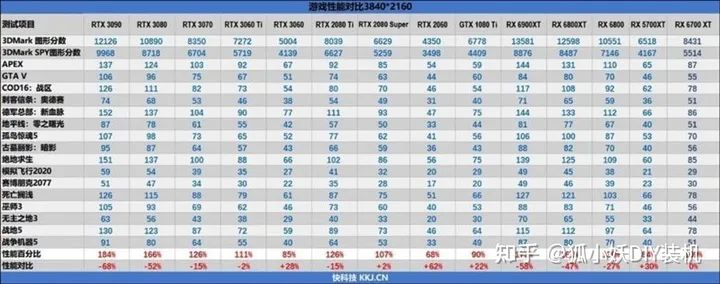Day10 函数
- 编写一个函数,交换指定字典的key和value。
例如:dict1={'a':1, 'b':2, 'c':3} --> dict1={1:'a', 2:'b', 3:'c'}
def exchange_kv(dict1):new_dict1 = {}for key in dict1:value = dict1[key]new_dict1[value] = keyprint(new_dict1)exchange_kv({'name': 'KathAmy'})
{‘KathAmy’: ‘name’}
- 编写一个函数,提取指定字符串中所有的字母,然后拼接在一起产生一个新的字符串
例如: 传入'12a&bc12d-+' --> 'abcd'
def letter_str(str1):str2 = ''for i in str1:if i.isupper() or i.islower():str2 += iprint(str2)letter_str('cdw15%$%^&huhkdjHIJHVGu')
cdwhuhkdjHIJHVGu
- 写一个自己的capitalize函数,能够将指定字符串的首字母变成大写字母
例如: 'abc' -> 'Abc' '12asd' --> '12asd'
def capitalize1(str1: str):first_char = str1[0]if first_char.islower():return first_char.upper() + str1[1:]else:return str1print(capitalize1('kathAmy'))
KathAmy
- 写一个自己的endswith函数,判断一个字符串是否以指定的字符串结束
例如: 字符串1:'abc231ab' 字符串2:'ab' 函数结果为: True字符串1:'abc231ab1' 字符串2:'ab1' 函数结果为: False
def endwith_ab(str1: str, end: str):n = len(end)return str1[-n:] == endprint(endwith_ab('sjxab', 'ab'))
True
- 写一个自己的isdigit函数,判断一个字符串是否是纯数字字符串
例如: '1234921' 结果: True'23函数' 结果: False'a2390' 结果: False
def isdigit_str(str1):for i in str1:if not '0' <= i <= '9':return Falsereturn Trueisdigit_str('1234')
True
def isdigit_str(str1):for i in str1:if not '0' <= i <= '9':return Falsereturn Trueisdigit_str('abc函数1234')
False
- 写一个自己的upper函数,将一个字符串中所有的小写字母变成大写字母
例如: 'abH23好rp1' 结果: 'ABH23好RP1'
def upper_str(str1):new_str1 = ''for i in str1:if 'a' <= i <= 'z':new_str1 += chr(ord(i) - 32)if not ('a' <= i <= 'z'):new_str1 += ireturn new_str1print(upper_str('xhsjAJhj7'))
XHSJAJHJ7
- 写一个自己的rjust函数,创建一个字符串的长度是指定长度,原字符串在新字符串中右对齐,剩下的部分用指定的字符填充
例如: 原字符:'abc' 宽度: 7 字符:'^' 结果: '^^^^abc'原字符:'你好吗' 宽度: 5 字符:'0' 结果: '00你好吗'
def rjust(str1:str, length, fill_char: str):len1 = len(str1)if len1 > length:return str1return fill_char * (length - len1) + str1print(rjust('123', 8, '*'))
*****123
- 写一个自己的index函数,统计指定列表中指定元素的所有下标,如果列表中没有指定元素返回-1
例如: 列表: [1, 2, 45, 'abc', 1, '你好', 1, 0] 元素: 1 结果: 0,4,6 列表: ['赵云', '郭嘉', '诸葛亮', '孙膑', '赵云', '孙权'] 元素: '赵云' 结果: 0,4列表: ['赵云', '郭嘉', '诸葛亮', '孙膑', '赵云', '孙权'] 元素: '关羽' 结果: -1
def list_index(list1, item):result = []for x, y in enumerate(list1):if y == item:result.append(x)if result:return ','.join([str(i) for i in result])return -1list_index(['赵云', '郭嘉', '诸葛亮', '曹操', '赵云', '孙权'], '赵云')
0,4
def list_index(list1, item):result = []for x, y in enumerate(list1):if y == item:result.append(x)if result:return ','.join([str(i) for i in result])return -1list_index(['赵2云', '郭嘉', '诸葛亮', '曹操', '赵2云', '孙权'], '赵云')
-1
- 写一个自己的len函数,统计指定序列中元素的个数
例如: 序列:[1, 3, 5, 6] 结果: 4序列:(1, 34, 'a', 45, 'bbb') 结果: 5 序列:'hello w' 结果: 7
def list_len(list1):count = 0for i in list1:count += 1print(count)list_len([1, 34, 'a', 45, 'bbb'])
5
- 写一个自己的max函数,获取指定序列中元素的最大值。如果序列是字典,取字典值的最大值
例如: 序列:[-7, -12, -1, -9] 结果: -1 序列:'abcdpzasdz' 结果: 'z' 序列:{'小明':90, '张三': 76, '路飞':30, '小花': 98} 结果: 98
def max_list(list1):if type(list1) == dict:seq = list(list1.values())# list1 = seq 运行字典需要此行代码(细心网友发现的嘿嘿)max1 = list1[0]for x in list1[1:]:if x > max1:max1 = xprint(max1)max_list('abcdpzasdz')
z
- 写一个函数实现自己in操作,判断指定序列中,指定的元素是否存在
例如: 序列: (12, 90, 'abc') 元素: '90' 结果: False序列: [12, 90, 'abc'] 元素: 90 结果: True
def in_list(str1, item):for i in str1:if i == item:return Truereturn Falseprint(in_list([12, 90, 'abc'], 90))
True
- 写一个自己的replace函数,将指定字符串中指定的旧字符串转换成指定的新字符串
例如: 原字符串: 'how are you? and you?' 旧字符串: 'you' 新字符串:'me' 结果: 'how are me? and me?'
def replace1(str1: str, old: str, new: str):return new.join(str1.split(old))str1 = 'how are you? and you?'
print(replace1(str1, 'you', 'me'))
how are me? and me?




